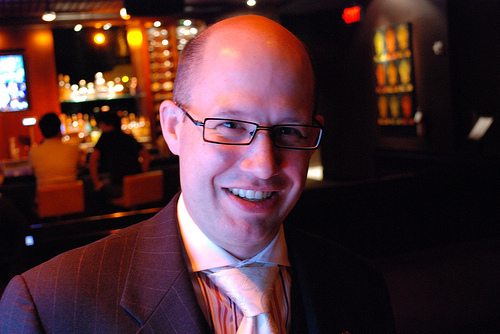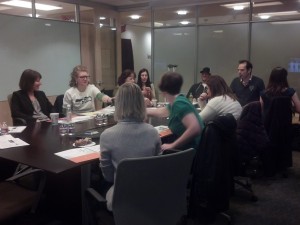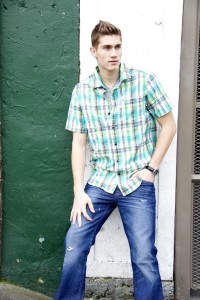

Fashion Week Success and the role of the Fashion Incubator

I’ve often wondered what benefits could be made to a designer by their participation in a fashion incubator. Quite frankly, I myself have toyed with the idea of starting one in Santa Fe. As an ex-stockbroker, I am familiar with business incubators and have watched many businesses grow from incubator to a full-fledge business. As one of the Executive Producers for Santa Fe Fashion Week, I understand what is that we hope to achieve and the steps it takes to get there. Often, I have found that the expectations of designers who are new to the scene are not congruent to the reality of what a Fashion Week is and does.
What a Fashion Week Is
A Fashion Week is a springboard to success. We create the event and provide the venue. We generate and manage the huge amount of staff involved in the successful implementation of the event. We generate buzz. We give others something to buzz about. We create a place where people are seen and strive to be seen. We are newsworthy. We are an event worthy of tourism and interest for Santa Fe.
As Producers, we work diligently on delivering an exceptional experience. We arrange the convention space, acquire the runway and its setup, hire an MC, the models, negotiate hair and makeup, find a DJ, court the media in all its forms and outlets (writers, blogger’s, television, PR, magazines, digital, advertising etc), and, of course, we do whatever we can to fill the seats with the kind of guests a fashion designer would want. This includes the general public, buyers from surrounding boutiques, and beyond – and all within a limited budget and a limited amount time. Those were just a list of the basics. Regardless of the immense amount of planning and movement it takes to heft a fashion week into being, I have also found that some designers prefer not to do the heavy lifting that is required to gain altitude on our kind of springboard. Differing amounts of real success have befallen designers who have preceded the fashion week they signed up for by including additional work for their fashion week showing. Some designers I’ve known have (also) researched potential boutique owners that may want to attend a Fashion Week. They invite them to come (buyers simply register, they know the drill – it is free for them to attend) and set up appointments during the show. Santa Fe Fashion Week, in addition to its main runway show event, boasts a number of ways a designer can market their line of clothing. PopUp boutiques have been sweeping the nation in popularity, and are gaining worldwide ground. PopUp booth space and vendor areas are available during and before the show, as well as our Santa Fe Fashion Week Shop and Stroll on historic Canyon Road (venues page), known for its world-class art galleries. We provide a unique and interesting space for designers to showcase their fashion lines to potential buyers.
What I’ve Learned

Last February, when Amanda and I attended MAGIC (the worlds largest fashion trade show), I had a chance to visit with many of the vendors. Some booths were manned by the designers while others brought reps. Reviews on success were mixed. Some of the designers were booked with back to back appointments. They had built a nice database and had done plenty of homework, having made good use of time prior to MAGIC to invite would-be buyers to see their newest line. Many of the vendors had models on hand, along with their lookbooks, to show how their clothing moved on a live person. These trade-show warriors know that a trade show is their store-away-from-home and can be tailored to the needs and preferences of specific buyers. (see Amanda’s Blog “Now I know why they call it MAGIC”)
Some of the other designers I visited with were complaining about the lack of traffic. They were hoping to draft of off the other designers’ hard work and show their fashion designs to people passing by. On one hand, you have buyers that attend MAGIC to browse the host of mega-venues in pursuit of finding the latest looks, but many of the buyers that attend Magic already know what they are looking for. They are in a hurry to make the purchases they planned, and to get back home to run their own business. You may have some success by drafting off of foot traffic, though it may be a better use of your time and hard-earned dollars to be proactive before the show. Book appointments, and perhaps even go so far as to invite some of your targeted buyers out for cocktails or dinner!
Producing fashion shows has taught me that there is a gaping need to build a bridge for emerging designers once the designers meet potential buyers after being promoted (and promoting themselves ) at tradeshows and Fashion Weeks so they are capable of fulfilling the orders they came to acquire.
How does a fashion incubator work?

I Spoke to Steven Matsumoto (pictured above, left), founder of the Seattle-based fashion incubator. Steven founded Seattle Fashion Incubator (SFI) in 2010. In a recent interview Steven Matsumoto said “The incubator is designed to propel fashion businesses forward, with a host of support resources and services such as office space, capital, training and industry connections…” Steven feels like he has found what works best when it comes running a successful fashion incubator: By connecting and operating a purchasing organization to go out and negotiate on behalf of emerging designers.
Steven compares his incubator to having a Gym with different levels of membership, and helps fashion designers for as long as they seek help. His company is able to provide a variety of services including a Wholesale Fabric Buyer Membership, Associate Resident Program, a Designer Resident Program, and a Preferred Vendor Program. When joining SFI, one can expect to receive the following services:
Wholesale Fabric, Trim and Notions, Pattern Making and Grading, Sample Production and Low Minimum Manufacturing, Business Coaching, Showroom Space, Sourcing Services
Seattle Fashion Incubator has received resounding support from local industry insiders, from peers around the country, and the press. He hopes to franchise the concept sometime down the road. Steven was excited to report that he has 11k worth of equipment on its way and has just moved into a 3600 square-foot space. “…there’s a lot of opportunity for growth down here,” Matsumoto said of downtown Renton in a recent interview. “and it’s just getting the fashion community – one – and other economic development stakeholders and investors – two – to see what I see when I look at downtown Renton.”
Banding Together

Most recently SFI has formed a strategic alliance with the Entrepreneurship Innovation Institute (EII) at the Samuel Curtis Johnson Graduate School of Management at Cornell University to support start-up fashion and apparel businesses in the region. Steven says “Through this strategic alliance, Johnson MBA students will gain direct experience in dealing with the range of challenges that innovative apparel startups face, and in turn, these SFI companies will gain access to the professional marketing, financial, and planning services they need and seek,” said Rhett L. Weiss, executive director of EII.
What’s Next

Look for part two of this blog – where we are featuring interviews with two designers currently participating with the Seattle Fashion Incubator: Mark Bradsman CEO of Six-8 Clothing Company (the name says it all!) and Stéphane Boss of the Socially and Environmentally Conscious Brand BYDFAULT, where both fashion entrepreneurs share their experiences and success as fashion brands with the Seattle Fashion Incubator to Santa Fe Fashion Week! Check out their websites now!

